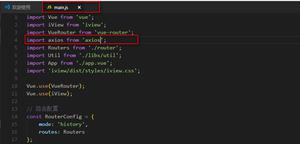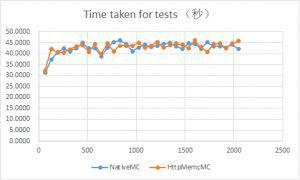用python编写exporter监控接口访问数量+错误率+响应时间

1.编写exporter
import prometheus_clientfrom prometheus_client import Gauge,start_http_server,Counter
import pycurl
import time
import threading
from io import BytesIO
#创建client_python里提供的prometheus Counter数据类型
url_http_code = Counter("url_http_code", "request http_code of the host",['code','url'])
url_http_request_time = Counter("url_http_request_time", "request http_request_time of the host",['le','url'])
http_request_total = Counter("http_request_total", "request request total of the host",['url'])
#curl url,返回状态码和总共耗时 -- 返回状态和响应时间
def test_website(url):
buffer_curl = BytesIO()
c = pycurl.Curl()
c.setopt(pycurl.URL, url)
# c.setopt(pycurl.WRITEDATA, buffer_curl)
c.setopt(pycurl.CONNECTTIMEOUT, 3)
c.setopt(pycurl.TIMEOUT, 3)
try:
c.perform()
except pycurl.error:
http_code = 500
http_total_time = 999
else:
http_code = c.getinfo(pycurl.HTTP_CODE)
http_total_time = c.getinfo(pycurl.TOTAL_TIME)
return http_code, http_total_time
#根据curl返回值,统计放到exporter显示的数据 -- 统计各个状态的总数
def count_metric(url):
http_code, http_total_time = test_website(url)
if http_code >= 100 and http_code < 200 :
url_http_code.labels('1xx',url).inc()
elif http_code >= 200 and http_code < 300 :
url_http_code.labels('2xx',url).inc()
elif http_code >= 300 and http_code < 400 :
url_http_code.labels('3xx',url).inc()
elif http_code >= 400 and http_code < 500 :
url_http_code.labels('4xx',url).inc()
else:
url_http_code.labels('5xx',url).inc()
if http_total_time < 1 :
url_http_request_time.labels('1',url).inc()
elif http_total_time < 2 :
url_http_request_time.labels('2',url).inc()
elif http_total_time < 3 :
url_http_request_time.labels('3',url).inc()
else :
url_http_request_time.labels('+Inf',url).inc()
http_request_total.labels(url).inc()
#线程控制,每隔5s执行curl url
def count_threads(url):
while True:
t = threading.Thread(target=count_metric,args=(url,))
t.setDaemon(True)
t.start()
time.sleep(5)
#将每个需要监控的域名起一个进程
if __name__ == '__main__':
start_http_server(9091)
server_list = [
'www.baidu.com',
'www.qq.com',
'blog.csdn.net',
'github.com',
'google.com'
]
threads = []
for url in server_list:
t = threading.Thread(target=count_threads,args=(url,))
threads.append(t)
for thread in threads:
thread.setDaemon(True)
thread.start()
thread.join()
坑:prometheus不会提醒metrics的名字,要主动复制进去:curl http://10.0.0.111:19091/metrics
复制:https://blog.csdn.net/specter11235/article/details/87927202
--------------------------------------------------------------------------------------
计算exporter的metrics的比率
#自定义exporter-counter##状态码是500的个数
url_http_code_total{code="5xx",url="10.0.0.111:55555/a.txt"}
#访问接口的个数
http_request_total{url="10.0.0.111:55555/a.txt"}
------------------------------------------------------------------
#错误率
delta(url_http_code_total{code="5xx",url="10.0.0.111:55555/a.txt"}[1m]) / on(url) group_left delta(http_request_total{url="10.0.0.111:55555/a.txt"}[1m])
#http code的每分钟增长率,如果出现5xx,就说明有问题了
irate(http_request_total[1m])
#显示期望时间的比例,比如只显示小于1秒,占总次数的比例
delta(url_http_request_time_total{le='1'}[1m]) / on(url) group_left delta(http_request_total[1m])
#复制
https://blog.csdn.net/specter11235/article/details/87927202
以上是 用python编写exporter监控接口访问数量+错误率+响应时间 的全部内容, 来源链接: utcz.com/z/388784.html








